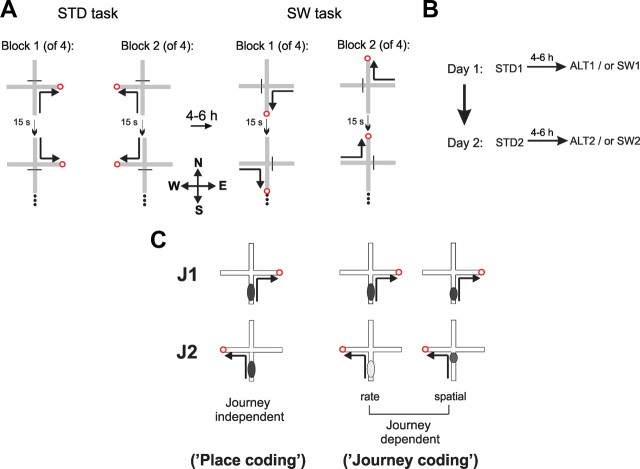Figure 1.
Experimental design and journey-dependent activity. A, Rats were trained in a spatial win-stay task with serial reversals on a plus maze. In the familiar STD task, the North and South arms were defined as start arms and the East and West arms were defined as goal arms. In each trial the rat was placed on one of the start arms and could find food at the end of one goal arm. After completing at least 9 of 10 correct trials to a particular goal, reward location was reversed to the other goal arm (Block 2). After reaching asymptotic performance, rats were implanted with tetrodes and neural activity in hippocampal CA1, and CA3 layers was recorded during STD performance. After 4–6 h the same neural population was recorded while rats performed the SW task for the first time. In the SW, start and goal locations were exchanged, so that the rat was placed on either West or East arm and could find reward at the end of either the North or South arms. A separate experiment recorded hippocampal activity as rats performed the STD task, and a few hours later the same task in an altered room (ALT, data not shown). The ALT task followed the same rules and procedures as the STD, but most local and distal room cues were unfamiliar. B, The same populations of cells were recorded during the four recording sessions over 2 d. C, Journey-independent place fields were defined by cells with statistically similar activity patterns on a given maze arm (a start arm here) during corresponding journeys toward different goals (J1 vs J2). Journey-dependent place fields were defined by statistically distinct firing rates or locations on a given arm. Place coding was defined operationally by journey-independent place fields; journey coding was defined operationally by journey-dependent place fields.

